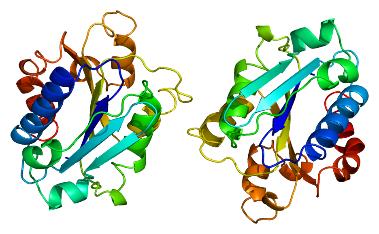Introduction of ITGAM
The integrin α M (ITGAM) gene encodes the α chain (CD11b) of the αMβ2-integrin which couples with CD18 (also known as integrin β2) to form leukocyte-specific complement receptors type 3 (CR3). The α subunit (CD11b) of CR3 is a 165 kDa glycoprotein, comprising a 1092 amino acid extracellular domain, a 26 amino acid transmembrane segment, and a 19 amino acid cytoplasmic tail. ITGAM is a well-characterized molecule in the integrin alpha chain family, and variants within a cluster of genes encoding the ITGAM on chromosome 16 are significantly associated with systemic lupus erythematosus (SLE).
CR3 (also known as Mac-1, αMβ2, CD11b/CD18) is a member of the integrin superfamily of adhesion proteins and responsible for cell-cell interactions to mediate adhesion to extracellular matrices. CR3 receptor interacts with complement C3 activation products (iC3b) to initiate phagocytosis. CR3 has involved in leukocyte adhesion and migration and is also a receptor for the cleaved complement factor iC3b. CR3 mediates adhesion to many targets and plays a fundamental role in neutrophil and monocyte adherence to stimulated endothelium cells as well as clearance of complement-coated immune complexes.
Cellular Distribution
It has been possible to identify many ITGAM-bearing cells, and CR3 is a dominant integrin on many macrophage populations. CR3 (CD11b) can be up-regulated following cellular activation and has been found on a variety of blood cells and tissues, including monocytes, macrophages, dendritic cells, neutrophils, eosinophils, natural killer cells, basophils, cytotoxic T cells, and B cells. CR3 is also expressed on follicular dendritic cells (FDCs) and microglia. Integrins participate in immunity and cell-extracellular matrix interactions, in which they play a critical role in the physical attachment as well as in intracellular signaling.

Fig. 1 ITGAM structure schematic diagram.1
Function of ITGAM
The major biologic role of ITGAM appears to be the promotion of either antibody-dependent or independent effector cell functions. ITGAM recognizes a number of endogenous ligands but also acts as an opsonic receptor for the complement component (iC3b), and as a non-opsonic receptor for a variety of exogenous ligands. The non-functional ITGAM (R77H) variant is associated with dysregulated B cell function. ITGAM may serve as one of the threshold-setting molecules on B cells in the regulation of autoreactive B cell tolerance. Therefore, ITGAM is critical in regulating B cell receptor (BCR)-mediated autoreactive B cell activation/tolerance. These heterodimeric proteins are involved in leukocyte adhesion to endothelial cells and the extracellular matrix, and thus play a role in the translocation of leucocytes into the tissues. When CR3 becomes engaged to a systemic inflammatory response, with accompanying toxicity for the host as well as the infecting organism, which is likely a signal that the homeostatic mechanisms have been overwhelmed, and a systemic pathologic response is required.
Signaling of ITGAM
Like other integrins, ITGAM can mediate intracellular signaling following ligand binding, the so-called ‘outside-in’ signaling, but can also mediate ‘inside-out’ signaling steps, in which the affinity of the receptor for its ligand is influenced. Inside-out signals derive from accessory receptors, including chemokine receptors, cytokine receptors, TLRs, CD14, CD31, or other integrins, further initiating 'outside-in' signals that drive integrin effector functions. Signaling via ITGAM can induce many cellular responses, including cytotoxicity, phagocytosis, adhesion, and migration. However, some of these responses, such as cytotoxicity and phagocytosis, require a second stimulus.
Products in Creative Biolabs
A variant of the ITGAM has been found as a risk factor to being associated with the disease susceptibility and pathogenesis of Complement Therapeutics for SLE. Changes in the structure or the number of ITGAM molecules may prohibit the correct handling of immune complexes, thus predisposing individuals to SLE, developed lupus-like cutaneous vasculitis, and panniculitis. Therefore, ITGAM-based research is of great importance. Creative Biolabs presently provides a variety of products, including but not limited to:
-
Monoclonal/polyclonal antibody
-
Recombinant ITGAM protein
Please feel free to contact us for more details about the complement receptor ITGAM.
Reference
-
From Wikipedia: By Emw - Own work, CC BY-SA 3.0 https://commons.wikimedia.org/wiki/File:Protein_ITGAM_PDB_1bho.png
For Research Use Only.
Related Sections:

